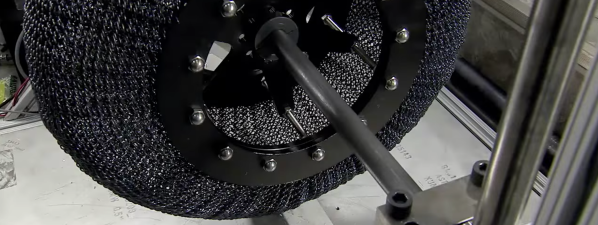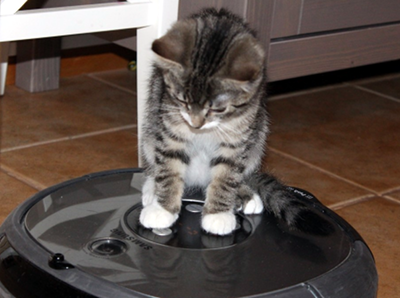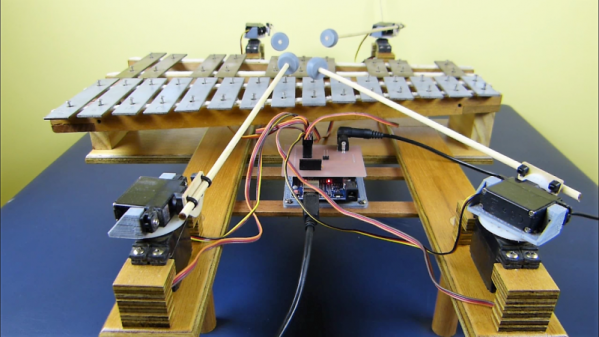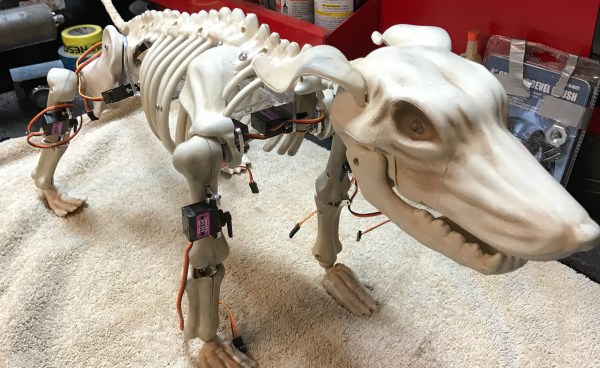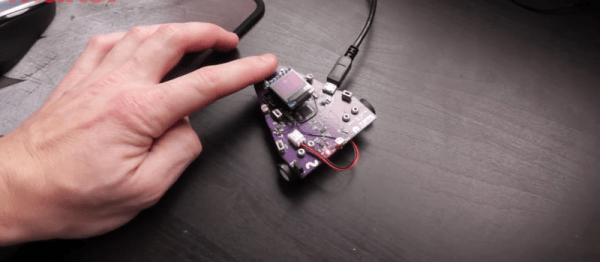NASA’s Glenn Research Center is experimenting with nickel-titanium memory alloy tires that resemble chain mail. It’s an intriguing angle — the tires can withstand heavier loads and at higher speeds. They’re airless and immune to puncture. Presumably they’re not literally chainmail but closer to a sweater in construction.
This tire is a culmination of a number of fascinating research drives. NASA has been experimenting with tensegrity structures as a means of building in space without spending a ton of rocket fuel on heavy hardware. These structures use tensioned cables to maintain a three-dimensional structure. The tires use the stiffness of the wire as well as internal stiffeners to maintain shape, without the need for a whole rim.
In addition to structural tensegrity, the memory alloy also helps keep its original shape by resisting deformation — it springs back into its original shape. When ordinary materials are stretched, you’re stretching the bonds between the atomic structures. NASA’s NiTi alloy goes through an “atomic rearrangement” when stressed, easing the forces put on those structures. As a result, the alloy can withstand 10% deformation versus 0.3% for spring steels, or about 30 times the deformation that a normal alloy could withstand without having permanent deformation occur — dents, basically. NASA’s tires can actually compress down to the axle and then pop back.
Continue reading “Will Your Next Whip Pack Memory Chainmail Tires?”

